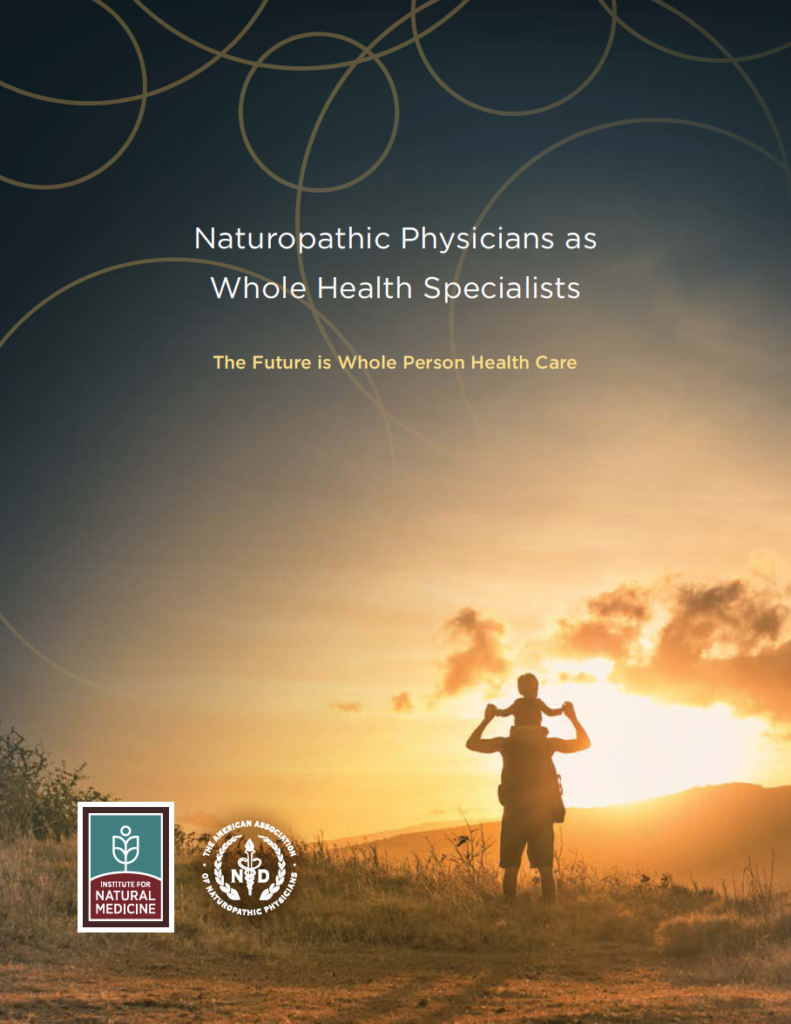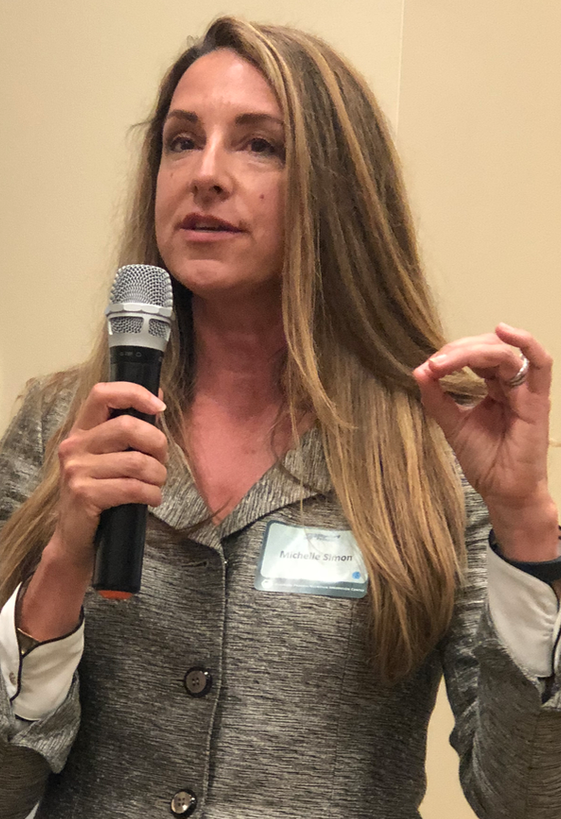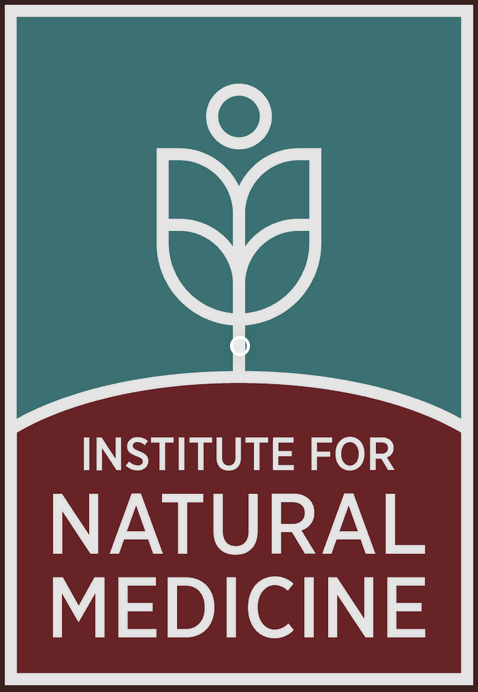
The healthcare systems in the United States are in dire need of what naturopathic medicine has to offer, and the profession is ready to move from the margins onto center stage.
That’s the message of a new mission statement issued jointly by the Institute for Natural Medicince (INM), the American Association of Naturopathic Physicians (AANP), and several other organizations in the field.
This statement of principles titled,Naturopathic Physicians as Whole Health Specialists, cites the challenges confronting conventional care systems— the increasing prevalence of multiple co-occurring chronic diseases in the population, fragmented care systems, health disparities, a projected shortage of 122,000 physicians by 2032, and declining patient satisfaction—and posits that naturopaths are well-equipped to confront them.
“Licensed naturopathic
physicians contribute an accessible, effective model of primary and specialty
clinical care to address these unprecedented current and future healthcare
challenges. Its comprehensive systems approach to clinical decision-making
addresses underlying contributions to disease and incorporates behavioral,
lifestyle, and other
interventions to support disease prevention and to improve patient outcomes.”
Interest is Rising
There are currently eight 4-year naturopathic medical schools in the US and Canada, graduating roughly 400 graduates in total per year. NDs and NMDs are now licensed in 22 states, and eligible for at least some measure of insurance reimbursement in 10 states.
“This is not just to enhance the naturopathic profession. The naturopaths are the key to catalyzing the transformation of healthcare in this country.”
Len Wisneski, MD, George Washington Medical Center
According to INM’s president and CEO, Michelle Simon, PhD, ND, enrollment in naturopathic schools has risen since the COVID pandemic began, with some schools reporting 30% or better increases over the last 2 years. That trend matches a steadily increasing public awareness of the profession, and a pent-up desire for comprehensive whole-person medical care.
“Naturopathy is the best-kept secret in healthcare,” Simon told Holistic Primary Care in a recent interview.

Institute for Natural Medicine
The thoroughly referenced position paper provides a compendium of clinical outcomes studies of patients with MS, type 2 diabetes, cardiovascular disease, depression, polycystic ovary syndrome, and other common conditions, as well as case studies illustrating the naturopathic approach to GERD, “long” COVID.
It also includes cost-benefit analyses, amply demonstrating that naturopathic care can save money, and deliver equivalent or superior clinical outcomes as conventional allopathic medicine, at considerably lower overall costs.
There’s also a section on the COVID pandemic, and the potential role naturopathy could play in mitigating it—a role the authors believe is substantial.
System Transformation
“This is not just to enhance the naturopathic profession. The naturopaths are the key to catalyzing the transformation of healthcare in this country,” said Leonard Wisneski, MD, a clinical professor of medicine at George Washington Medical Center, Washington, DC.
A longtime advocate for broader inclusion of naturopaths, and other holistic physicians, into the medical mainstream, Wisneski heads an interdisciplinary advisory board comprised of MDs and DOs who share INM and AANP’s vision.
“Whole health means transformation of the systems going forward. Conventional medical education is great. However, it is focused on disease. There’s still very little on lifestyle factors, behavioral health, relationships, environmental factors. It is all about disease diagnosis, the molecular basis of disease, and how to mitigate that with drugs and surgeries. That is wonderful. But it is not answering the clarion call of the future.”
“Across the landscape, who’s prepared to lead the new charge? The naturopaths!” Wisneski continued. “They learn the basics of conventional medical education plus the lifestyle aspects, the nutrition, all the things left out of conventional medical training.”
At the heart of naturopathic practice is a therapeutic hierarchy which is nearly a total inversion of the allopathic approach:
- Establish conditions for health
- Stimulate the Vis Medicatrix Naturae (“the healing power of nature”) and self-healing capacities
- Support and balance physiologic and bioenergetic systems
- Address or correct structural integrity
- Address pathology using specific natural substances or interventions
- Address pathology using pharmaceutical or synthetic substances
- Suppress or surgically remove pathology.
In short, the naturopathic approach begins with the goal of restoring and cultivating health, not just quelling symptoms and averting crises.
That, they authors say, is what’s lacking in mainstream healthcare systems, and it is what is needed to stem the epidemics of chronic inflammatory diseases.
Allies, Not Enemies
The new position statement, a manifesto of sorts, presents a vision for the future, in which naturopathic medicine “is welcomed as an essential ally to conventional medicine…in a model that integrates naturopathic physicians and the principles and practices of naturopathic medicine.”
“Naturopathy is the best-kept secret in healthcare”
Michelle Simon, PhD, ND, President & CEO, Institute for Natural Medicine
A truly integrative system would be centered around the principle of using “the least invasive means necessary” in all clinical situations. It would include naturopaths in clinical research projects, and on staff at major medical centers, hospitals, community health centers, and integrative clinics nationwide.

On a policy level, the authors are calling for licensure of fully-trained naturopaths in all 50 states, as well as Medicare and Medicaid coverage for naturopathic primary care.
Simon and her colleagues at INM are already making significant headway toward some of these goals.
New Residency Programs
Through their work with the Natural Medicine Collaborative—a consortium of more than 80 academic institutions, independent clinics, national and state organizations, and corporate partners—they recently established a new naturopathic residency training program through which ND residents can obtain free residency training, as do their MD counterparts.
Historically, naturopathic residencies have been few and far between because the costs are not covered by Medicare, as are the MD programs.
INM residencies are funded by grants from corporate partners including Integrative Therapeutics, Thorne Research, Standard Process, Ayush Herbs, Euromedica, and others.
In addition to clinical skill-building, these 2-year residencies also include practical business training, to prepare future practitioners for the rough-and-tumble realities of earning a living in a challenging healthcare environment.
Simon noted that there are currently 25 naturopathic residents learning at 14 clinics in three states. Ultimately, she aims to have residency positions available for any naturopathic grad who wants one.
INM has also established a Primary Care Task Force which recently succeeded in convincing several federally qualified health centers (FQHCs) in rural regions of the northwest to hire naturopaths as primary care physicians. Until recently, federally funded clinics were reluctant to even consider putting NDs on staff.
The collaborative is also developing a “Food as Medicine” research program in rural North Carolina, and a childhood nutritional education project.
“We do believe NDs can help in the clinical trenches,” says Simon. “But what we’re really hoping is that the core concepts of naturopathic medicine eventually become core concepts of medicine in general.
END







